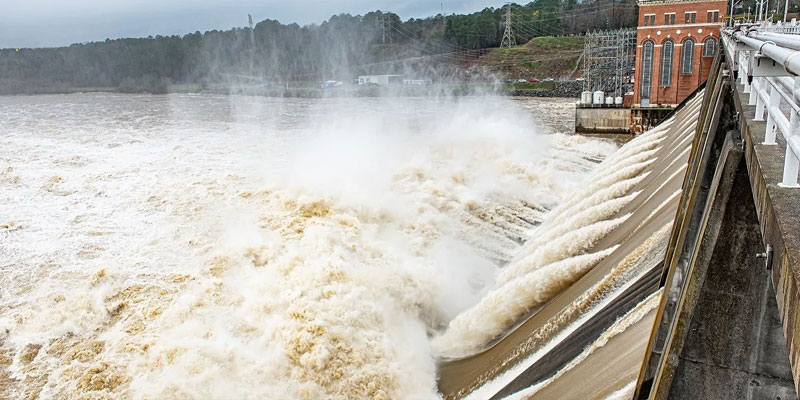Lots of rain in 2020 meant lots of clean, renewable, low-cost hydropower for Alabama Power customers.
Preliminary figures show the company produced significantly more hydropower in 2020 than projected, placing 2020 as the eighth-best year on record for hydroelectric energy production.
“Hydropower is one of the most cost-effective sources of energy,” said Herbie Johnson, Hydro general manager for Alabama Power. “The more hydropower produced, the better for our customers.”
With hydropower, there’s no need to purchase fuel, since the source of the energy is a renewable resource: rain. Hydropower also creates no emissions, helping protect air quality.
Of course, hydropower is subject to the whims of Mother Nature, since it depends on ample rains to keep hydro reservoirs filled.
That wasn’t a problem in 2020, with record spring rains, adequate summer showers and two major hurricanes in the fall. Indeed, those record spring rains resulted in the best January through April in the company’s history for hydropower production.
Those spring rains broke records across the state, leading to higher-than-average rainfall totals for the year in multiple locations. At Birmingham-Shuttlesworth International Airport, for example, rainfall for all of 2020 was the fifth-highest on record. Rainfall data for Birmingham dates back to 1896. Anniston, Birmingham, Huntsville, Muscle Shoals and Tuscaloosa all recorded their soggiest first quarters ever in 2020, according to the National Weather Service.
The substantial spring rainfall, combined with wise management of water resources throughout the year, helped make 2020 a strong year for hydropower generation in Alabama.
Turbine upgrades at several Alabama Power dams in recent years have helped the company produce more renewable energy with less water. Alabama Power has 14 hydroelectric facilities on 11 lakes across the state. The company’s lakes also provide sources of drinking water, recreational opportunities and help fuel local economies.
Typically, Alabama Power gets between 4% and 8% of its electricity annually from hydro. The company’s diverse generating mix includes power produced from nuclear, natural gas and coal-fired power plants, and from renewable resources such as solar and wind.
Learn more about Alabama Power hydro generation at https://apcshorelines.com/.
(Courtesy of Alabama NewsCenter)













